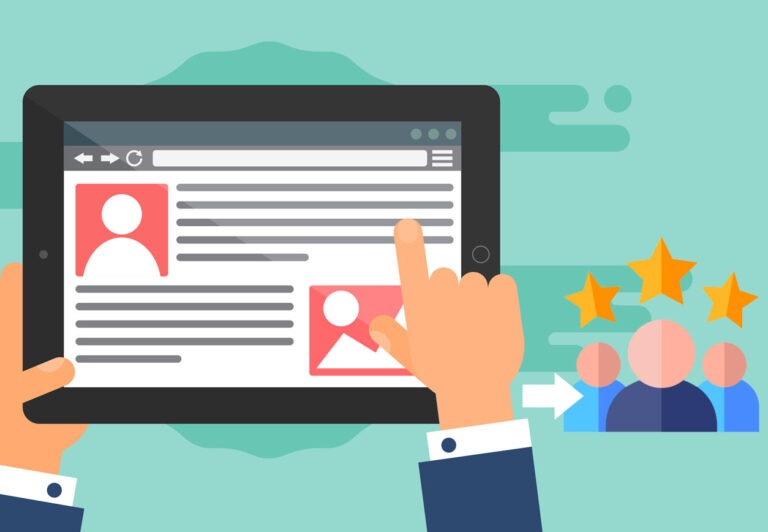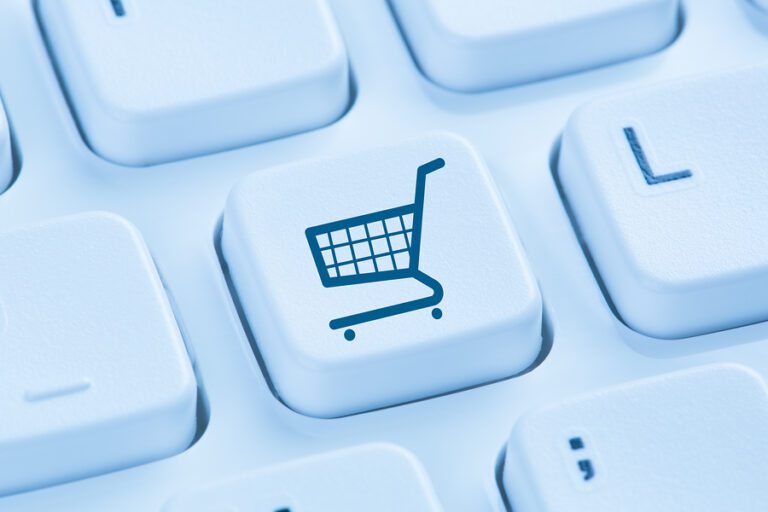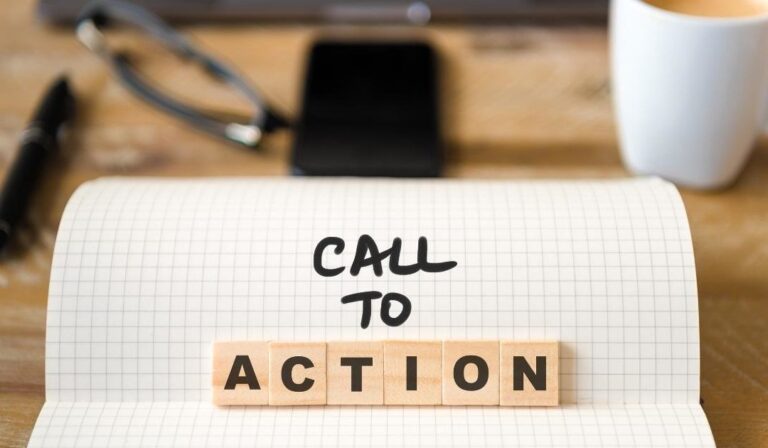How to Generate Leads from Email Marketing: 11 Ways

I hope you enjoy this blog post. If you want Hello Bar to grow your leads, click here.
Author:
Ryan Bettencourt
Published
July 2, 2024

Whether you’re a content strategist, graphic designer, email marketer, or wear multiple hats juggling it all, there’s one common thread — generating leads. It’s the lifeblood of any business.
While connecting with your ideal customer can feel overwhelming, email marketing offers a proven and powerful solution. In fact, the email marketing industry is booming, with revenue projected to rise from $8.3 billion in 2023 to $18.9 billion by 2028. Few if any other channels can compare with its average return on investment (ROI).
In this blog post, we’ll explore how to generate leads from email marketing. We’ll share actionable email lead generation tips to help you turn those website visitors into loyal customers. Get ready to learn how to craft compelling email campaigns that nurture leads and drive conversions.
Why Is Lead Generation Important For Business?
To put it simply, lead generation is the most organic way to maintain an open line of communication with your potential customers. Once you’ve gathered their contact information, usually their name and email address, you’re set up to stay in touch long-term without immediately soliciting for a direct sale.
The HubSpot state of marketing report states that 50% of marketers consider lead generation a top priority in their marketing campaigns. The same report also mentions that 34% of marketers highlighted lead generation as their top priority for the next 12 months.
But what makes lead generation so important?
Well, let’s start by saying that it is more targeted and cost effective as compared to broad marketing strategies like TV commercials and generic online pop-ups. This allows you to focus on potential customers that are interested in your offerings.
Additionally, generating leads from HubSpot marketing, email campaigns, or other methods ensures a steady influx of potential customers that increases the sales pipeline. Since lead generation works for both B2B and B2C models you can tailor it to your industry or business.
Lead generation strategies like social media marketing, email marketing, and content marketing allow businesses to reach and engage their target audience at scale. These methods not only generate leads but also nurture relationships, moving prospects through the sales funnel more effectively.
Industry trends show that 43% of marketers agree that social media brings the highest ROI followed by email (33%) and website and blog SEO (32%).
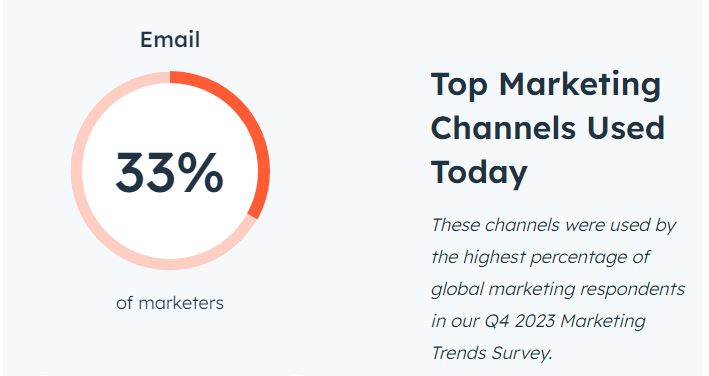
Image from HubSpot
Growing Your Email List Using On-Site Tactics
First things first: Grow your email list using tools on your website. Here are a few ideas to help you get started:
- Create a landing page to gather visitor information.
- If you’d prefer to use your existing homepage, make sure your opt-in form is prominent and easy to find.
- Use a service like Hello Bar to create custom messages for your followers and call them to action. For example, you could create a pop-up box with an invitation to download a lead magnet, such as a free quote, survey results, or coupon.
Subscribers Vs. Leads
Let’s take a second to define the two MVPs of your email list: subscribers and leads. Subscribers are all of the people on your email list who receive your messages in their inbox, regardless of their level of engagement. If we’re talking in baseball terms, they’re every single person on the team roster.
But the goal isn’t to make it to the roster — it’s to win the game, right? A subscriber turns into a lead when they step up to the plate, engage your brand with interest, and are one swing away from becoming a customer. That’s what we’d like to call a home run.
Converting Subscribers Into Leads
Fortunately, there are several different options for helping your subscribers move from sitting on the sidelines to making an informed decision and becoming a customer. At Campaign Monitor, we like to simplify all of the options out there into our three favorite email marketing must-dos: segmentation, personalization, and automation. Together, we’ll dig deeper into examples of each, but for now, here’s what you need to know:
Segmentation is the key to continuously sharing relevant content your readers will continue to engage with.
Personalization moves the focus away from your brand and onto your subscriber. (Spoiler alert: They’re going to love this!)
Automation helps you scale your current efforts for optimal success.
11 Ways to Generate Leads from Email Marketing
We could talk forever about how effective and profitable email marketing is, but in the spirit of lead generation, let’s focus on the numbers.
Studies show that 60% of consumers want to hear from brands through email and opt-in email marketing. But how do you set yourself up for inbox success?
1. Utilize Interactive Content
Did you know that the number of emails sent daily is expected to increase to 392.5 billion by 2026? That said, there are high chances that yours might not add in generating leads from email marketing right away, but you can make yours stand out with interactive content.
Incorporating interactive content into your email marketing strategy creates a dynamic experience that educates, entertains, and keeps readers engaged with your brand.
According to a report, interactive content attracts 52.6% more engagement compared to static content. Examples of interactive content you can include in your emails are:
- Polls
- Quizzes
- Embedded videos
- Image carousels
- Animated call to action (CTA) buttons
- Countdown timers
Check out this example from Xfinity, showing buttons for navigating between images.
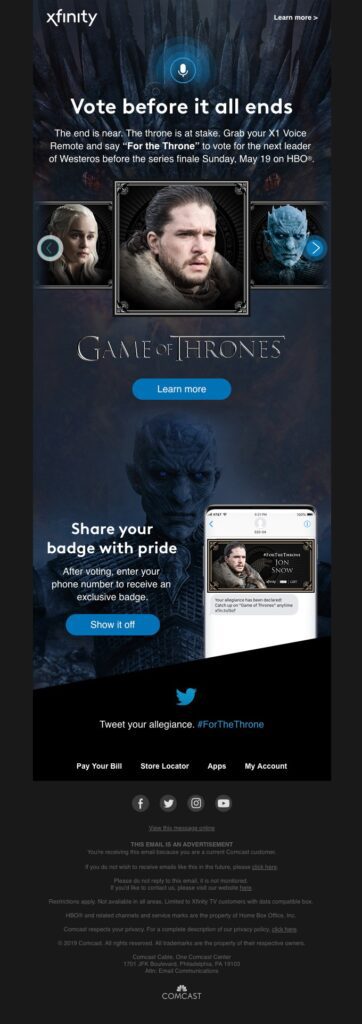
Image from ReallyGoodEmail
2. Leverage Contests and Giveaways
Contests and giveaways are prime tools to generate leads from email marketing simply because people love the chances of winning. From bragging rights to sought-after prizes, nothing motivates users to provide their name and email address like the chance of a big reward. In fact, Psychology Today’s Sander van der Linden, Ph.D., notes that competitive nature is something that has co-evolved with our basic need for survival.
You can consider using these strategies to maximize the effect of your contests and giveaways for email marketing lead generation:
- Use Email to Nurture Participants: Don’t just collect emails and forget about them. You should set up drip email marketing campaigns to engage with all participants, not just the winners.
- Limited-Time Offers: You can create urgency by running contests for a limited time. This will boost participation rate as no one wants to be left out.
- Create Tiered Entry Methods: While email submission can be the basic entry method, offer additional entries through other marketing channels. This will inspire actions like sharing on social media or referring friends, potentially increasing your reach.
- Follow-Up Strategy: Create a plan for integrating new email leads into your regular email marketing efforts after the contest ends.
3. Organize Educational events and webinars
No matter your industry, it’s important to establish your company as a thought leader within its expertise, and there’s no better way to do that than to put on educational events and webinars. Offering educational resources and online events not only provides you with a new email list of potential leads, but also equips potential customers with credible knowledge about your product and company. That’s what we call a win-win.
Here’s how to maximize email lead generation from educational events and webinars:
- Grow Your Email List: Enhance your email marketing strategy by utilizing targeted email campaigns to promote events and webinars. Use a simple opt-in form to capture email addresses during registration. Integrate your opt-in forms with real-time email verification to prevent spam form submissions and fake email sign-ups.
Here’s how Bright Edge uses a four-field opt-in form to get more valuable info like company and phone number:
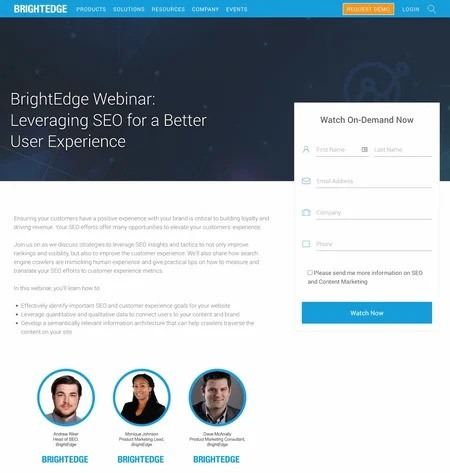
Image from BrightEdge
- Demonstrate Credibility: Webinars provide an opportunity to showcase expertise. Offer relevant and valuable content to establish trust and position your brand as a reliable resource.
- Nurture Leads: After the event, follow up with attendees using additional resources, exclusive content, or personalized email sequences. This approach keeps leads engaged and guides them further down the lead generation funnel.
- Optimize with Data: Leverage email marketing tools to track essential metrics such as registration rates and post-event click-throughs. Analyzing this data allows you to refine your approach and enhance lead generation for future events.
4. Visually Connect with Your Audience
Did you know that it only takes 13 milliseconds for our brains to process an image? With people’s ever-decreasing attention spans and other messages clamoring for your ideal customers’ time, it’s important to make the most of your email space using imagery. The addition of one inviting image could be the one thing that connects you with your potential email leads.
Here are a few tips to leverage visuals for email lead generation:
- Captivate at First Glance: Use high-quality, relevant images that grab attention instantly and directly connect to your email’s message.
- Break Up the Text: Avoid using large blocks of text as they can overwhelm readers. Instead, use images strategically to break up content, making it easier to digest and visually appealing.
- Optimize for Mobile Devices: A significant portion of emails are opened on mobile devices. Ensure your images are sized appropriately and display well on all screen sizes.
5. Include a Clear CTA
One of the biggest reasons users subscribe to your email list but haven’t become a potential lead is overwhelm and confusion due to mixed messaging. Your subscribers just aren’t sure what to do next. Whether it’s “Join Us Today” or “Reserve Yours Now,” a clear call-to-action simplifies the decision process into a yes-or-no question. Here’s one of our favorites from Birchbox:

6. Do Specific Targeting
Segmentation allows you to build an email list into groups of subscribers with similar traits, such as location, age, buyer history, and more. When you create email content that then speaks specifically to a particular segment, your subscribers are more likely to feel understood, making them more open to hearing what you have to say. Relevancy is what sets you apart and improves your open rates, which can long-term create new customers.
For example, the Knot sent this exclusive offer to a segment of customers who’d previously booked their services:
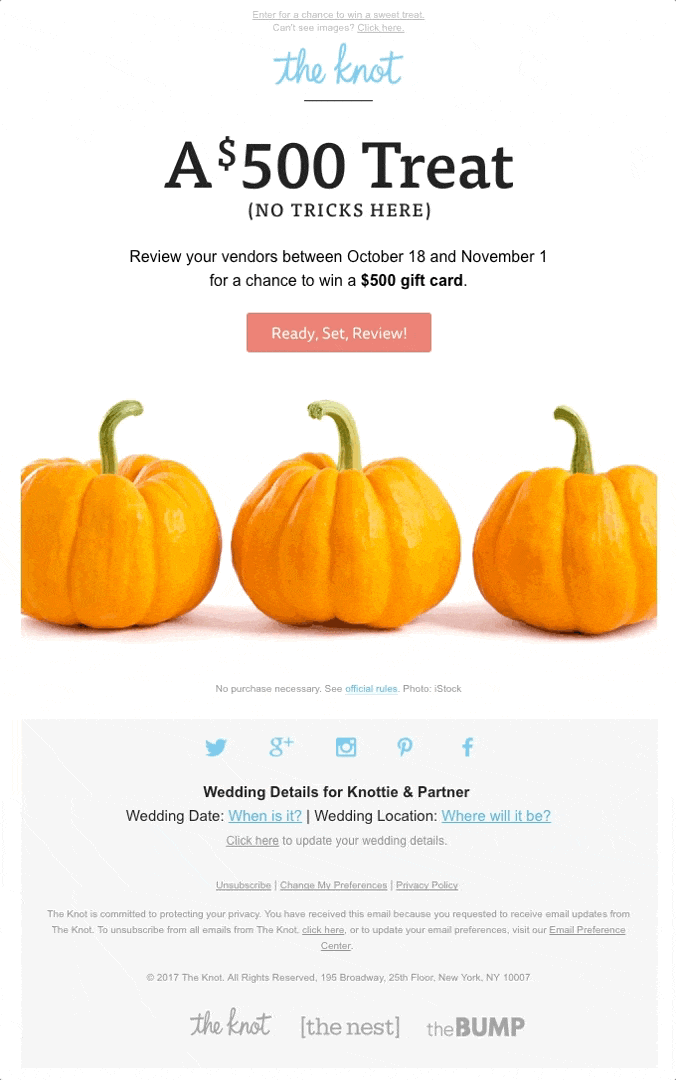
Segmenting your audience into demographics allows you to meet them in their everyday lives, whether it’s sending a birthday month coupon, a special mother’s day gift to the ladies on your list, or local recommendations, like this email for Lyft riders in Chicago:

7. Conduct A/B Testing
Not sure which phrase will grab your reader’s attention? Wondering if they’d prefer a picture of the beach or mountains? A/B testing brings experimentation to email marketing with the end goal of learning more about your ideal customers. By sending two versions of an email and seeing which had the highest engagement, you can continue refining your lead generation process and converting leads into customers.
At Campaign Monitor, we decided to use A/B testing to see which call-to-action was more effective. In group A, we sent “Get the Formulas,” while group B received a simple “Read More.” We found that the more action-oriented “Get the Formulas” button improved click-rates by 10%.
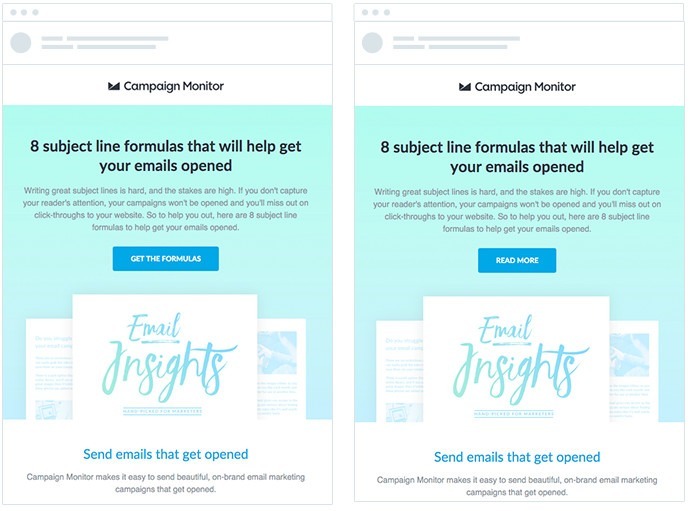
To set up your own A/B test, choose one variable to test, such as images, subject line, or sender name, then send the two separate versions to different subsets of your audience and see which one receives better engagements and click rates. Use this data to learn more about the details your subscribers love and be sure to include them in future messages!
8. Personalized Content
Somewhere in-between your initial idea and the creation of your email to pass along that idea, it can be easy to forget that the person receiving your message is a real, live person. Maybe it’s cliche, but if you’re trying to reach a human instead of an inbox, it pays to remember who you’re talking to.
What’s their name? What do they like? When’s their birthday? Use the information you know about your subscribers to anticipate the emails they’d like to receive from you. You know how it feels when your Starbucks barista pronounces (and spells!) your name correctly, so pass along the virtual joy. Ritual shows us what it means to go above and beyond:
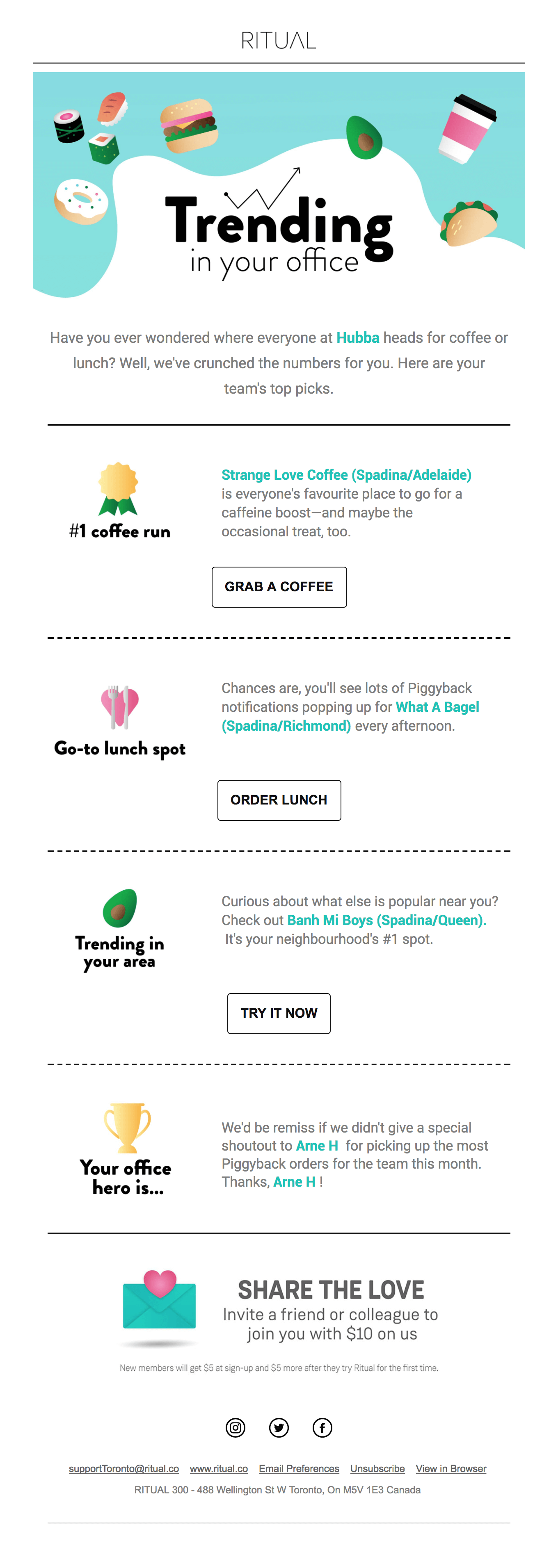
9. Provide a Valuable Offer
There’s a unique exclusivity to email inboxes. Rather than posting on social media platforms or printing a magazine ad, email provides you with the control needed to surprise your customers with offers they can’t find anywhere else. Offering exclusive promotions or codes via email keeps your readers engaged and creates a higher chance of purchase. Below are more tips on how to generate leads from email marketing using valuable content.
- Offer Variety: Don’t limit yourself to discounts. Consider exclusive content downloads, early access to new products, or loyalty program benefits to cater to different preferences.
- Gate Exclusive Content: Offer lead magnets such as valuable guides, ebooks, or webinars in exchange for email addresses. This way, you’ll build your list of email leads and get website traffic while providing value.
10. Automation and Scheduling
Imagine your customer is standing in the rain and you just so happen to be nearby with an umbrella. That’s the beauty of scheduling and automation — you can be prepared for your customer’s needs before they even know they have them. Automating welcome emails or messaging based on behavior (like when they abandon their cart on your website) is the most efficient way to maintain customer relationships.
11. Optimize Subject Line
Your subject line is your first, and sometimes, only chance to capture your recipient’s attention. A compelling subject line can dramatically improve your open rates, offering you more opportunities to generate email leads. Here are some tips for crafting effective subject lines:
- Keep it short, around 40 characters
- Personalize when possible
- Create urgency or curiosity
- Use numbers (e.g. 24 Hours Only: 50% Off Your Favorite Brands)
- Avoid spam trigger words (e.g. Risk-free, Don’t delete, Congratulations, Incredible deal, Special promotion)
Note: Some words tagged as spam-trigger may be appropriate in certain situations, especially if they accurately describe your offer. However, using them excessively or inappropriately can trigger spam filters, making your emails appear less trustworthy.
Bonus: Email Marketing Helps to Nurture Existing Leads
Hooray! You generated a lead. Now what? Thankfully, email marketing is also here to help you maintain your customer relationship once it begins. Whether it’s to boost ecommerce lead generation or for growing website traffic, it’s a great way to gently remind readers of their positive experience, and encourage them to continue loving your product and supporting your brand. Now that you’re a pro, you can use segmentation, automation, and personalization to keep in touch with your customers and remind them how great you are.
Get Started With a Lead Generating Email Marketing Tool
Now that you know what tools to use, you can look out for them when choosing an email service provider. Make sure you choose software that makes it easy to get to know your email subscribers, break them into segments, create customized imagery and content, and analyze your results.
FAQs
Q1. How can Email Marketing Generate Leads?
Email marketing can generate leads in the following ways:
- Establishing Trust: Offer relevant and valuable content
- Targeted Offers: Segment your target audience and send irresistible promotions or exclusive content tailored to their interests
- Lead Capture: Use gated content, contests, or sign-up forms to collect email addresses from potential customers.
- Calls to action: Direct readers towards the next step, whether it’s visiting a landing page, downloading a resource, or contacting you.
Q2. What Are the 11 Email Marketing Strategies?
The 11 email marketing strategies are as follows:
- Use interactive content
- Leverage contests and giveaways
- Organize educational events and webinars
- Connect with your audience through visuals
- Include a clear call to action
- Segment your subscribers for specific targeting
- Conduct A/B testing
- Integrate personalized content
- Provide a valuable offer
- Use automation and scheduling
- Optimize email subject lines
Q3. How Can I Find Email Leads?
Here’s how you can find email leads:
- Grow your network: Attend industry events, connect with other marketers on professional platforms like LinkedIn, and ask for referrals.
- Leverage social media: Promote signup forms or gated content on your social media platforms.
- Use online tools: Explore email finder tools or website search functions to locate professional email addresses. Consider using email lead generation software to help you discover email addresses, verify their accuracy, and manage large lead lists efficiently.
- Offer lead magnets: Provide valuable resources like ebooks or webinars in exchange for email addresses.
Q4. How Do You Nurture Leads through Email Marketing?
You should consider doing the following to nurture leads through email marketing:
- Provide Valuable Content: Offer informative emails, industry insights, or helpful resources relevant to your target audience’s needs.
- Segment Your Audience: Tailor content and offers based on the interests and purchase history of subscribers for a more personalized touch.
- Nurture with Workflows: Automate email sequences that educate leads about your brand and solutions, gradually moving them down the sales funnel.
- Track and Analyze: Monitor key metrics like open rates and click-throughs to measure engagement and refine your nurturing strategy.
Wrap Up
Lead generation can seem like a daunting task for any business, but inboxes are the best place to start. By creating content that makes your reader feel understood, empowered, and excited, you set them up for the best possible chances of conversion. How have you “wow”-ed your subscribers’ inboxes lately?


